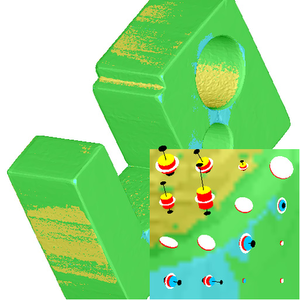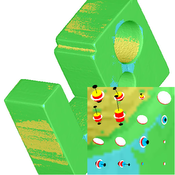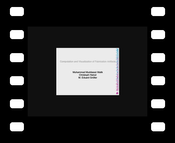Information
- Publication Type: Journal Paper with Conference Talk
- Workgroup(s)/Project(s):
- Date: February 2009
- Journal: Journal of WSCG
- Volume: 17
- Number: 1
- Location: Plzen, Tschechien
- Lecturer: Muhammad Muddassir Malik
- ISSN: Online: 1213-6964 (printed: 1213 – 6972)
- Event: WSCG
- Conference date: 2. February 2009 – 5. February 2009
- Pages: 17 – 24
Abstract
This paper proposes a novel technique to measure fabrication artifacts through direct comparison of a reference surface model with the corresponding industrial CT volume. Our technique uses the information from the surface model to locate corresponding points in the CT dataset. We then compute various comparison metrics to measure differences (fabrication artifacts) between the two datasets. The differences are presented to the user both visually as well as quantitatively. Our comparison techniques are divided into two groups, namely geometry-driven comparison techniques and visual-driven comparison techniques. The geometry-driven techniques provide an overview, while the visual-driven techniques can be used for a localized examination.Additional Files and Images
Weblinks
No further information available.BibTeX
@article{malik-2009-CVFA,
title = "Computation and Visualization of Fabrication Artifacts",
author = "Muhammad Muddassir Malik and Christoph Heinzl and Eduard
Gr\"{o}ller",
year = "2009",
abstract = "This paper proposes a novel technique to measure fabrication
artifacts through direct comparison of a reference surface
model with the corresponding industrial CT volume. Our
technique uses the information from the surface model to
locate corresponding points in the CT dataset. We then
compute various comparison metrics to measure differences
(fabrication artifacts) between the two datasets. The
differences are presented to the user both visually as well
as quantitatively. Our comparison techniques are divided
into two groups, namely geometry-driven comparison
techniques and visual-driven comparison techniques. The
geometry-driven techniques provide an overview, while the
visual-driven techniques can be used for a localized
examination.",
month = feb,
journal = "Journal of WSCG",
volume = "17",
number = "1",
issn = "Online: 1213-6964 (printed: 1213 – 6972)",
pages = "17--24",
URL = "https://www.cg.tuwien.ac.at/research/publications/2009/malik-2009-CVFA/",
}




